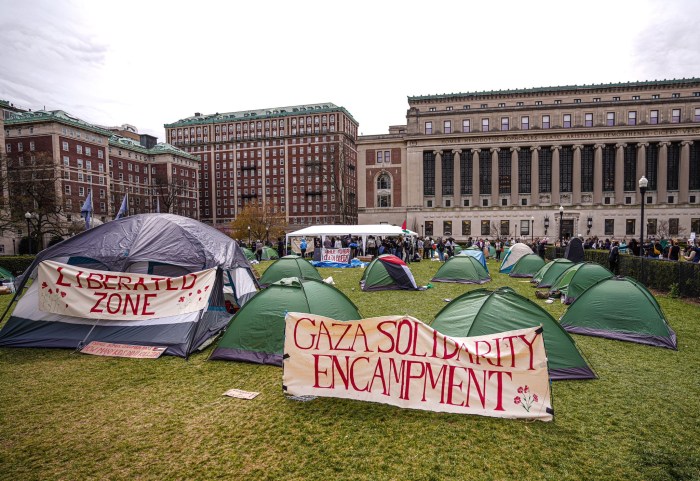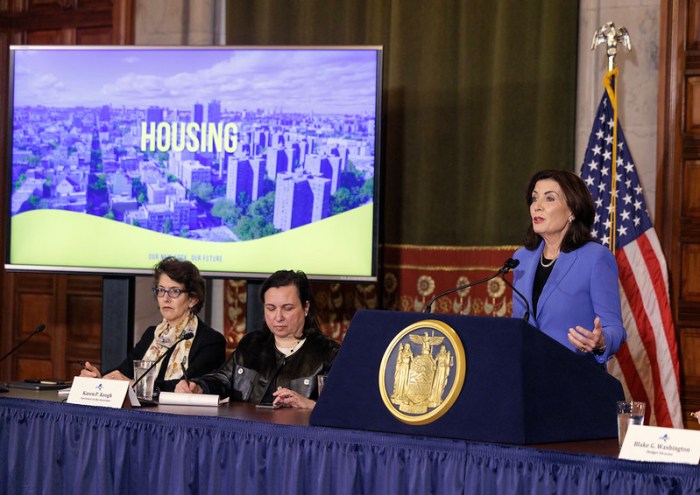BY LINCOLN ANDERSON | Surprising no one, the City Council last week approved a senior affordable-housing plan that would destroy the Elizabeth St. Garden.
The project would create 123 units of “deeply affordable” senior housing on the through-block site, located between Mott and Elizabeth Sts., between Spring and Prince Sts. Thirty percent of the units would be set aside for formerly homeless seniors. The building would be affordable for at least 60 years.
Meanwhile, under the scheme, the existing 20,000-square-foot Elizabeth St. Garden would be razed. The project, in turn, after destroying the statue-festooned garden, would provide 6,700 square feet of open space, which would be accessible to Elizabeth St. by a 1,700-square-foot publicly accessible open “breezeway” running under the new building.
In a recent change, an office space of 11,200 square feet that Habitat for Humanity would have been given in a one-story extension off of the project — and which was extremely galling to the community — has been pulled from the plan, increasing the open space that would be left.
But in the latest twist, Council Speaker Corey Johnson has been trying to broker a deal that would connect the remnant of open space that would be left on the former garden lot to a 14,000-square-foot building courtyard just to the south. The garden and the courtyard share an 80-foot-long fence.
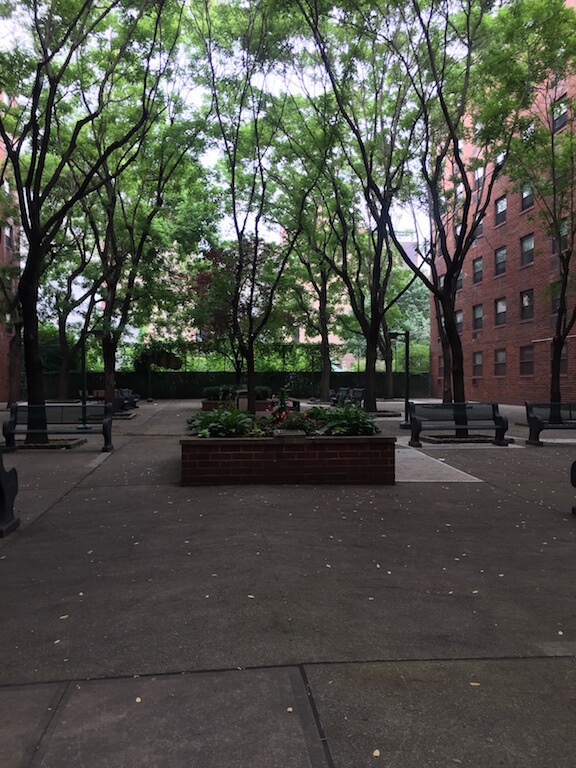
“A portion” of the courtyard would be a “publicly accessible space,” according to the Department of Housing Preservation and Development, the lead city agency behind the Haven Green project.
However, the Elizabeth St. Garden’s two nonprofit groups — who both filed suit against the Haven Green development in March — aren’t buying this new substitute open-space plan, and intend to forge ahead with litigation to stop the housing project and save the garden. The two lawsuits have basically been combined into one and will be treated as such by the court.
The gardeners continue to argue that the de Blasio administration should instead simply shift the housing to an alternative site at Hudson and Clarkson Sts., where more housing could be built, so that the beautiful garden can be saved in open-space starved Little Italy. Community Board 2 — which contains both the garden and the alternative site — supports moving the housing project to the Hudson St. alternative site.
Meanwhile, the City Council on June 26 voted nearly unanimously to back the Haven Green plan. There was one abstention, Brooklyn Councilmember Rafael Espinal, who was a candidate in the special election for public advocate earlier this year.
It’s standard procedure for councilmembers, when voting on such matters, to defer to the local councilmember, and, in this case, Councilmember Margaret Chin is Haven Green’s main sponsor and fiercest defender. That said, every other local politician — with the notable exception of Manhattan Borough President Gale Brewer and Mayor de Blasio — is publicly on record for saving the garden.
Last month, DeMatteis Organization, the owner of the LIRA (Little Italy Restoration Association) affordable housing complex at 21 Spring St., just south of the garden, signed a “letter of commitment” to allow the courtyard to be used as a publicly accessible space.
In return, the City Council has agreed to preserve the LIRA apartments’ affordability, which had been set to expire.
Last month, Alan C. Sullivan, executive vice president of DeMatteis, sent Speaker Johnson a letter, dated June 10, as he put it, “to memorialize [our] commitment to working with your office, H.P.D., the Haven Green development team and the community board to preserve the affordability of apartments at 21 Spring St. and work in good faith to create a connected open space with the forthcoming Haven Green senior housing development.”
The letter notes that DeMatteis had met with H.P.D., the development team and a landscape architect three times in the previous weeks “to explore if and how the uses of these two spaces, one public and one private, might be integrated.”
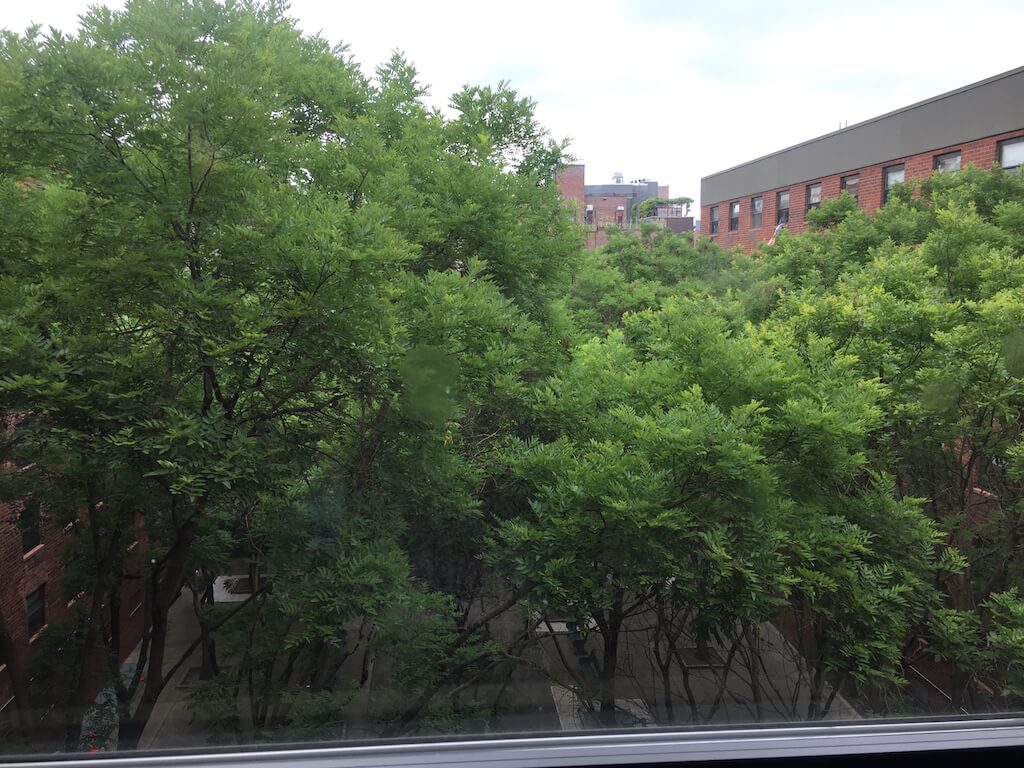
Sullivan’s letter goes on to note that because there are tenants at 21 Spring St. overlooking the courtyard, “we need to be mindful of their privacy and quiet enjoyment if the space becomes open to the public and would need to work with our existing tenants to make sure safety and privacy concerns are addressed.”
Sullivan also notes that while DeMatteis is “not in a position to absorb any additional costs” involving the courtyard’s redesign or reconstruction, it’s their understanding that the City Council would fund any needed capital costs to upgrade the open space.
Joseph Reiver, executive director of Elizabeth St. Garden, the group that operates the garden, said, despite Johnson’s new courtyard deal, saving the garden remains their focus.
“It seems that they’re willing to do everything they can instead of considering the alternative site,” Reiver said. “In the end, it doesn’t save the Elizabeth St. Garden.”
Reiver said he attended the City Council subcommittee and committee votes on Haven Green before the vote by the full City Council, and felt the councilmembers were oblivious to what they were even voting on.
“Half of them were on their cell phones and they just said, ‘Aye. Aye. Aye,’” he said.
As for the LIRA courtyard that has now been thrown into the mix, he said, “It’s all paved and there are benches in there and it’s shaded. It’s not the same thing. I can tell you that grass would never grow in there. There are rear windows, so there are privacy logistics we’ll have to figure out.”
Jeannine Kiely is president of Friends of Elizabeth St. Garden, the group that initially rallied the community to the garden’s defense after it was discovered to be city-owned property.
“The City Council continues to ignore the opportunity for commonsense city planning and a win-win solution,” Kiely said. “At 388 Hudson St., the city can build five times as much housing for local seniors.
“Engaged, rational citizens who recognize the dire crisis of both housing and green spaces look at the choice that the city is making — ignoring the obvious better solution — and are baffled and enraged,” Kiely said. “Some small changes to the Haven Green plan are piecemeal modifications and will be seen as an attempt to mollify the thousands of residents and visitors who have expressed their need for the garden as a public park.”
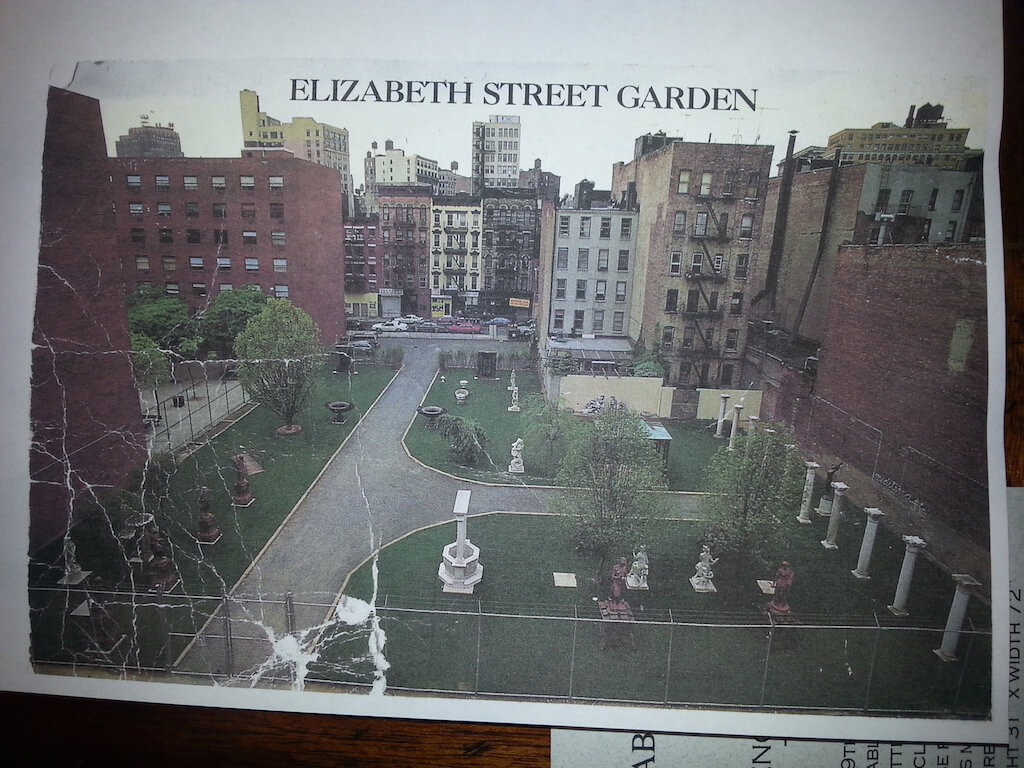
Tobi Bergman, when he was C.B. 2 chairperson, was a staunch defender of the Elizabeth St. Garden, and it was he who had the idea of moving the housing to the alternative site, which had previously been designated for a park. Bergman recently resigned from the community board over another thorny development issue, Pier 40. Unlike Reiver and Kiely, Bergman likes Johnson’s idea of using the LIRA courtyard as public open space.
“The City Council put its big foot in the door and for the first time there is a real opportunity to have both affordable housing and a real public garden,” Bergman said. “Addition of space created by the removal from the plan of the one-story building extension [for Habitat for Humanity], along with the adjacent courtyard at 21 Spring St., creates an area for a large and dynamic community place. To get there, we’ll need lots of government and neighborhood commitment and cooperation, a great park designer, a plan for real public governance, and lots of good luck. We’re not there yet,” Bergman noted, “but hopefully everyone will have sufficient vision and goodwill to see this through to a happy ending.”
Similarly, David Gruber, chairperson of the C.B. 2 Elizabeth St. Garden Working Group, was intrigued by the idea of making the courtyard public space.
“I think it’s not a bad idea,” he said. “It’s 14,000 square feet, which is kind of what we’re losing. If the garden picked up 14,000 square feet, that would be tremendous.
“Corey’s office worked really hard, that’s what drove it,” Gruber said of the courtyard plan. “I mean, it could be a beautiful environment. There could be shrubs all around. The ‘L’ shape could be interesting,” he said, referring to how the remaining open space on Mott St. could connect to the LIRA courtyard.

Told that Reiver, for one, is still focusing on saving the garden, Gruber was puzzled.
“Why would Joseph Reiver not want to embrace something that would give us more space?” he asked. “I want to save the garden, too. That’s my priority. But if that’s not going to happen, I like this prospect of integrating [the two spaces],” he said. “I’m not ready to shoot holes into this. The door is open. Corey’s office opened it.”
However, Reiver said bluntly that not all open space is equal.
“It doesn’t change it for us,” he stressed of the courtyard option. “We’re fighting to save Elizabeth St. Garden. It’s more than just generic open space — it’s an iconic space, and it’s heavily used.”
Although the next court date for the lawsuit is set for September, Reiver warned that if the developers “try to pull a fast one,” such as by doing soil test borings in the garden, the opponents will go straight to court.
Jennifer Romine, a resident of the LIRA building, said tenants there are very much for saving the Elizabeth St. Garden.
“Ninety-five percent of LIRA tenants signed the 2015 petition in strong support of saving the garden and followed up with personal letters,” she said. “These people barely provide Census info or vote. Twenty LIRA seniors showed up at first hearing at the Lower Manhattan Development Corporation. At least seven spoke passionately.”
She was referring to a hearing on L.M.D.C. grant money several years ago at which H.P.D. was requesting funding for the Haven Green project.
Speaker Johnson and Councilmember Chin did not comment on the record for this article.












